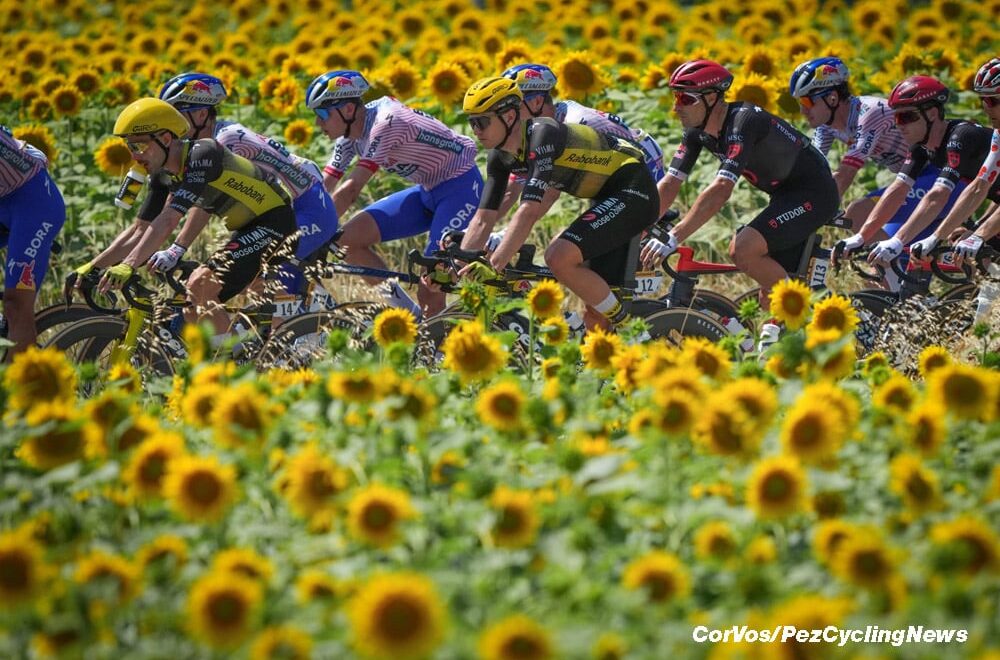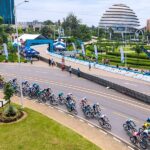
When in late 2022 a rumor spread that Netflix was planning a Tour de France-focused Drive to Survive-like series, a whisper of pride and excitement rippled through the cycling community: Finally they understand: there’s beauty and drama in this sport, the kind around which you can build a high-budget, broad-appeal showcase.

In its first couple of seasons, Unchained sporadically lived up to this expectation, with a few compelling storylines and occasional stunning images. But while we cyclists hoped the series would be replete with saddle-mounted camera sequences, the kind that might earn respect from ‘Murican viewers raised on car chases and car crashes, and with agony-of-victory-style shots of unheralded riders gutting out a stage win — or simply finishing a stage — Unchained instead sought to conjure David vs. Goliath tension between one team and one rider after the other, leaning on rider and — often somnambulistically — directeur interviews to form the context.
But if the first two seasons failed to reach our Alpine expectations, season three never gets off the start ramp. The production value seems to have diminished, even from the rough-cut feel that pervaded much of seasons one and two; the stories are even more contrived; and the interviews and team meeting listen-ins are longer. It all feels rather phoned-in, like the creators decided to deliver the promised third season at as little cost and effort as possible.
Perhaps this was always to be the case: based on the bit of Drive to Survive I’ve watched, its draw is certainly similarly contrived, inter-team tension, but that tension is magnified by the sport’s massive-budget spectacle: When the F1 tour arrives in Monaco, drivers lounge on yachts and play catch with Tom Brady; when the Tour arrives in some sleepy town in the Massif Central, riders FaceTime with their girlfriends while sharing a hotel room. For every glimpse of Tadej surveying Dubai from atop a skyscraper or MVDP bottoming out his (borrowed) Lambo, there are countless others of Tour riders’ relative penury.

I wish the creators of Unchained had built a franchise around sweeping landscapes, the type of which only our sport can boast; a handful of human interest-style deep dives into riders’ lives — domestiques, not the sport’s few superstars; and quease-inducing, mid-pack camera tracks that admonish the non-cyclist who thinks, “They’re just riding bikes; what’s so hard?” But by instead spinning an ongoing rich-team-vs.-poor-team thread in a sport where no one is that rich, and by examining those teams inside the confines of drab meeting rooms and team buses, we’re left neither inspired by the images nor caring much about the characters; at one point, we learn that Tadej Pogaçar’s UAE Team Emirates has a budget of $60 million dollars! — about as much as a single top F1 driver earns in a year.
After the serialized disappointment of the much-hyped Unchained, then, we’re left with the Tour itself — and I am entirely content with following the original vehicle, because once again this year, the Grand Boucle is surpassing expectations. Pogaçar may ultimately ride easily away with the Maillot Jaune, but after ten stages, we’ve already been treated to authentic drama and intrigue. Virtually every stage features protagonists, foils, tension and tactics, not to mention the dazzle of French architecture and countrysides — and we’ve barely gotten to the mountains.
So: don’t bother watching season 3 of Unchained. Instead, those of you in the U.S.: subscribe to Peacock (for this month alone, if need be), and watch the last 50 kilometers of every stage. Keep it on in the background as you respond to emails or fold laundry, and listen to Phil and Bob; when their voices rise, follow closely. It will likely prove worth watching.

Unchained would have us believe that moments like this never happen.
The post (Not) Even Better than the Real Thing appeared first on PezCycling News.




